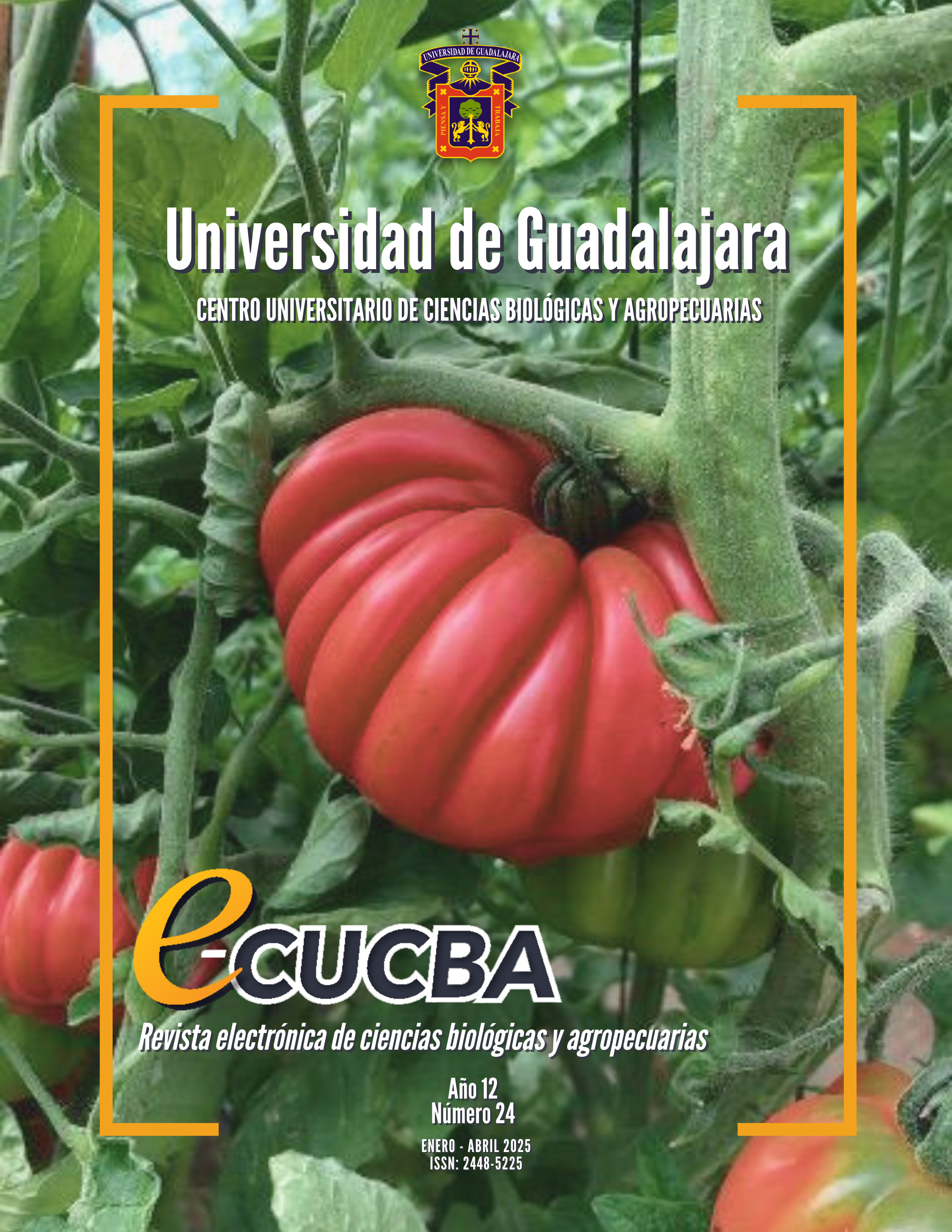The Melipona bee in Puebla: record of a sustainable production
The Melipona bee in Puebla: record of a sustainable production
DOI:
https://doi.org/10.32870/e-cucba.vi24.380Keywords:
bees, honey production, meliponicultureAbstract
In present time, it is very common to hear about actions that harm the environment. That result in the destruction of habitats, threats to the flora and fauna of many places on the planet and the modification of the environment by exotic species. The repercussions that this will have on our planet in the coming years could be very serious for insects, since they are the structural and functional basis of most of the ecosystems on the planet. Stingless bees are found in a large part of our country, occupying diverse environments, and have been found in both dry and humid forests, and are the main agent of pollination service. There is an important relationship between melipona bees and inhabitants of the Sierra Norte region of Puebla, where honey, propolis and wax are produced, which are highly appreciated products in these communities, for the treatment of diseases, food and generation of economic resources for the families of the place.
Knowledge of the management of melipona bees would allow for the formulation of strategies and synergies between the agricultural sector and the conservation of local ecosystems, in order to propose strategies for the conservation, promotion and sustainable use of species that are based on these interactions. This paper documents the management of the production of melipona bees of the species Scaptotrigona mexicana in communities in the state of Puebla.
References
Ayala, B. R. (1999). Revisión de las abejas sin aguijón de México (Hymenoptera: Apidae: Meliponini). Folia Entomológica Mexicana, 123(106), 1-123.
Baeza-Días, F., Chévez, E. y Porter-Bolland, L. (2023). ¿Qué sabemos de las abejas sin aguijón (Hymenoptera: Apidae, Meliponini) en México? Diversidad, Ecología y Polinización. Acta Zoológica Mexicana (nueva serie). 39, 1-17. 10.21829/azm.2023.3912565
Domerego, R. (2013). Melípona. La abeja sagrada de los mayas. Baroch editions. Francia. Pp: 127. ISBN 978-2-9539-249-2-3
Guzmán, M., Balboa, C., Vandame, R., Albores, M. L. y González Acereto, J. (2011). Manejo de las abejas nativas sin aguijón en México: Melipona beecheii y Scaptotrigona mexicana. El Colegio de la Frontera Sur. pp: 60.
PRI -Paleontological Research Institution. (2022). Evolution & Fossil Record of Bees. https://www.museumoftheearth.org/bees/evolution-fossil-record.
SEMARNAT. Secretaría de Medio Ambiente y Recursos Naturales. (2023). La meliponicultura en México: un acercamiento a las prácticas tradicionales y a las perspectivas de su manejo contemporáneo. https://www.gob.mx/semarnat/polinizadores
Tepedino, V. J. (1979). The importance of bees and other insect pollinators in maintaining floral species composition. Great Basin Naturalist Memoirs, 3, 139–150. http://www.jstor.org/stable/23376607.
Wikipedia (2024). Ciudad de Cuetzalan. es.wikipedia.org/wiki/Ciudad_de_Cuetzalan.
Downloads
Published
How to Cite
Issue
Section
License
Copyright (c) 2024 Leticia Muñoz Langarica, Marah Itzel Robles Sandoval, Alejandro Muñoz Urias, Martha Isabel Torres-Morán

This work is licensed under a Creative Commons Attribution-NonCommercial-NoDerivatives 4.0 International License.






